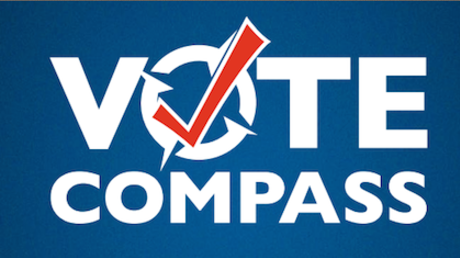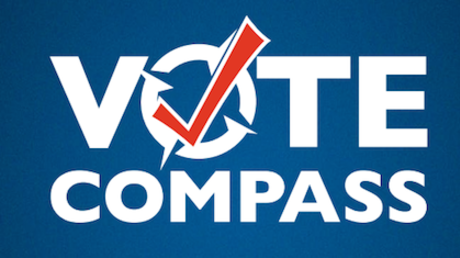Labor continues to hold a commanding lead over the Coalition in the final three weeks of the Victorian State election campaign, with the latest Fairfax-Ipsos survey showing Labor ahead 56% - 44% on a two-party-preferred basis.
Taken between 6 and 9 November, it replicates the Ipsos result from its previous survey, taken between 23 and 26 October, and suggests that whatever the politicians are doing – whether kissing babies, jumping off railway platforms or striding about in hi-vis vests – it is having little impact on the overall voting population.
These results continue the trend in the polls since June, as this table shows:
|
DATE |
POLL |
2-PARTY-PREFERRED RESULT |
|
|
|
|
Labor |
Lib-Nat |
|
|
|
% |
% |
|
June |
Newspoll |
54 |
46 |
|
June |
Nielsen |
56 |
44 |
|
July |
Nielsen |
51 |
49 |
|
August |
Galaxy |
52 |
48 |
|
August |
Newspoll |
55 |
45 |
|
September |
Newspoll |
51 |
49 |
|
October |
Ipsos |
56 |
44 |
|
October |
Galaxy |
52 |
48 |
|
November |
Ipsos |
56 |
44 |
|
November |
Average |
53.7 |
46.3 |
A Morgan poll conducted between 7 and 10 November by SMS from a sample of 1850 also has Labor leading - by 53.5 to 46.5, a 1% swing to Labor since a late October Morgan poll. It is safe to assume this figure is based on 2010 State election preference flows. Primary votes were 38% for the Coalition (up 0.5%), 36% for Labor (up 2%) and 18.5% for the Greens (steady).
In late October we had four other polls that had the Greens at 12-13%. It is far more probable that the Greens are closer to that level than to the 16% in Ipsos or 18.5% in Morgan, especially given that pollsters tend to overestimate Greens support. It is most likely that Labor’s primary vote will benefit from this Green overestimation. In any case, with the combined Labor/Green vote over 54% in both polls, and the Coalition languishing below 40%, it is clear that Labor would have won an election held last weekend easily.
Yesterday, we had news reports that suggest the Coalition’s internal polling is showing an improvement for them. The veracity of these reports cannot be tested yet because both polls in this article were taken last week. In general, scepticism of internal polling reports is advised, because the question wording and exact poll results are seldom revealed, and parties will often tell the media stories about their internals that may not be true.
The public polls show that Labor would have easily won an election held last weekend, and it is very probable that Labor will do better on preferences for given primary votes at this election than at the 2010 State election. Even if the Coalition’s internals are true, they have much ground to make up.
It is likely that the margin between the two main parties will narrow and be closer than the current average on polling day, but it is extremely unlikely that this trend will be reversed in the last two weeks of the campaign. Not since the federal election of 1980 – which predates telephone polling – have the polls in Australia as a whole got the result of an election wrong.
The 1980 election was by common consent Australia’s biggest polling disaster. The polls had consistently shown the ALP ahead of the Coalition, yet the Liberal Prime Minister Malcolm Fraser won his third general election in a row. A large causal factor was that in those days, polls were conducted door-to-door, typically over two successive weekends.
As Harold Wilson famously said, a week is a long time in politics. In an election campaign, it is an eternity. And in the last week of the 1980 campaign, the Liberals ran an intensive -- and as it turned out very successful -- scare campaign about housing mortgages and Labor’s economic credentials.
Many pollsters then gradually shifted to telephone polling, since the penetration of telephones into private homes had topped 90 per cent and the risk of excluding significant proportions of voters from the sample had diminished to an acceptable level.
Phone surveys can be done in a few hours, cutting down the time between the fieldwork and publication of the results, and thereby reducing the risk that intervening events will make the results out of date. Since then, the record of the Australian polls has been good when compared with the actual election results.
Not all technological developments have been as positive for polling as the telephone. The internet has inspired a raft of poll-like activities, some more useful than others. In this election campaign, for instance, the ABC has taken to publishing results from the Vote Compass project – a joint initiative with Election Watch.
This is one of the more useful examples, but it should not be confused with opinion polls carried out among a random sample of voters in which every voter has an equal chance of being included. It is that random inclusiveness that gives the polls their known degree of precision. Typically – as with the latest Ipsos poll – the sample will be about 1000 and the margin of error is about plus or minus 3.2 per cent.
Vote Compass - and the other online devices like it - does not randomly sample the population of voters. It invites the population at large to go on and answer a battery of questions about various issues, and then locates each respondent on a compass-like plane, showing them how close or distant they are in relation to the parties. The parties’ locations are determined from their policy manifestos.
Vote Compass’s strength is that it attracts a very large number of responses. A report on ABC television news on 13 November stated that the answers to questions about industrial relations had been analysed from 74,000 responses.
While theoretically there are several problems taking these results at face value, in reality they may be quite close to the results you would get from a random sample. Vote Compass weights its raw results using demographic, voting intention and other factors that are asked about in the questionnaire. This is likely to give a better reflection of attitudes than otherwise.
A similar Herald Sun-Channel Seven project called Your Say, published on 13 November, showed that 49 per cent of respondents said the East-West link was the State’s highest-priority transport project. Coincidentally, the Fairfax-Ipsos poll – based on a random sample of 1000 – showed that 59 per cent of voters supported the East-West link and 29 per cent opposed it.
Now, the questions were different and the population of respondents to the Your Say project is an unknown quantity, but the broad contours of Your Say responses were not very different from those of the Ipsos poll. Indicatively, the broad picture is that more people are in favour of the East-West link than are against it.
This might, of course, be a sheer fluke. That’s the fundamental problem with the online results, especially when the number of responses is relatively small, as it was with Your Say’s 2500. And 2500 what? Voters? No. Audience members. The Herald Sun told us so in its article.
And were they 2500 individuals or did some participate more than once? We don’t know, although Vote Compass does have protocols to screen out multiple responses.
So care needs to be taken by media outlets who publish these data to make it clear that these results are not equivalent to a conventional opinion poll even if, as with Vote Compass, the weighting procedures make it a better reflection of attitudes than would otherwise be the case. The media fail badly at this. The public needs a more transparent account of the methods than is currently given.
Dr Denis Muller is a senior research fellow in the Centre for Advancing Journalism at the University of Melbourne and one-time associate of Irving Saulwick in conducting the Saulwick Poll for The Age and The Sydney Morning Herald.
Adrian Beaumont is a PhD student at the University of Melbourne’s Department of Mathematics and Statistics and a regular contributor on political polls for The Conversation.





